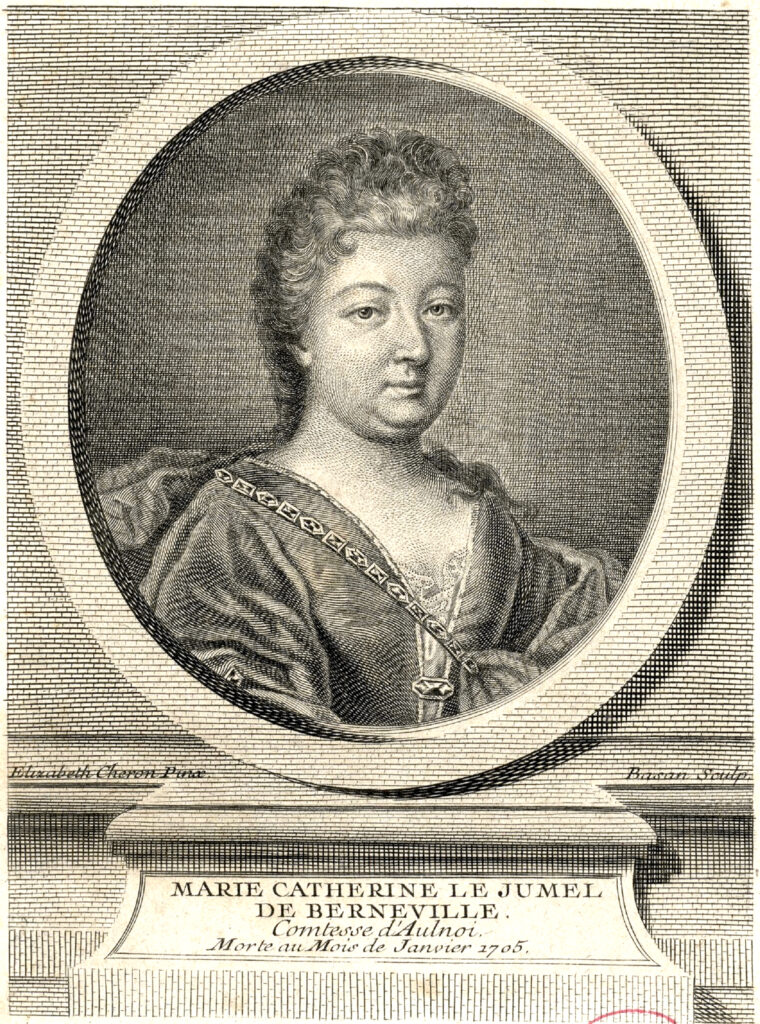
Fairy tales remain one of the predominant literary genres during childhood due to their timelessness and wonder-inducing quality. The style was made popular by writers like Charles Perrault or the Grimm Brothers and, more recently, thanks to Disney’s animation. However, its origins are often ignored.
While tales of a mythological nature have always existed, the term of fairy tale is more recent and comes from a French woman, Marie Catherine d’Aulnoy, who coined the term in the 17th century. Also known as Madame or Countess d’Aulnoy due to her aristocratic background, she was herself a notorious writer. She used the term for the first time to name a collection of stories released in 1697-98, but she was not the only one to use this term. Part of a circle of women storytellers who gathered and shared their work in ‘salons’, they used the term ‘fairy’ to refer to themselves as a way to ‘cock a snook’ at tradition. Despite producing most of the fairy tales written between 1690 and 1715, they did not prosper as much as men.
While she has now been forgotten by the general public, Madame d’Aulnoy was praised at her time for her stories mixing pseudo-history, autobiography and adventure. This led her to her nickname of Clio, who was the Greek muse of history. However, contrary to today, those tales were mainly geared towards a completely different audience–educated adults. Indeed, tales and fairy tales often involved a subversive tone and many elements of satire. As a matter of fact, the stories were often written as critiques of society, its institutions, and even morals!
Madame d’Aulnoy had herself a tendency for subversion, leading to several scandals throughout her life. Forced into marriage as a teenager to a baron 30 years older than her, she plotted her way out of the marriage in 1669. This led her husband to be arrested and sentenced to death. However, the sentence was interrupted when the scheme was discovered. As a consequence, she and her accomplices–her mother and 2 of her lovers–fled into exile to avoid punishment.
She did not hesitate to take inspiration from her own life to write and even used her stories to express her personal opinions. For example, in the fairy tale The Blue Bird, she criticised forced marriage which was still very common at the time. Later on, during her exile, she wrote many books inspired by her travels. Unfortunately, the relevance of her work diminished in the 19th century when the fairy tale as a genre evolved to get closer to folk tales.
Madame d’Aulnoy remained popular among literary critics who often compared her and Perrault (the author of Cinderella). Interest in her work re-emerged with the development of the feminist movement in the 20th century. Many feminist theorists started to review her work and to look into her life, which they saw as an example of women’s liberation. Indeed, through her stories, d’Aulnoy was exposing women’s life and experience as it really was, exploring many women-related themes such as motherhood, feminine virtue, and so on. Nowadays, a new collection of her work can be used to understand how it was to be a woman at that time! One of her stories has even been recently translated in to English for the first time and will be released by Princeton University Press in 2021, showing that her work remains relevant more than 300 years after her death.
-Claire Rochet
Contributor
Girl Museum Inc.
